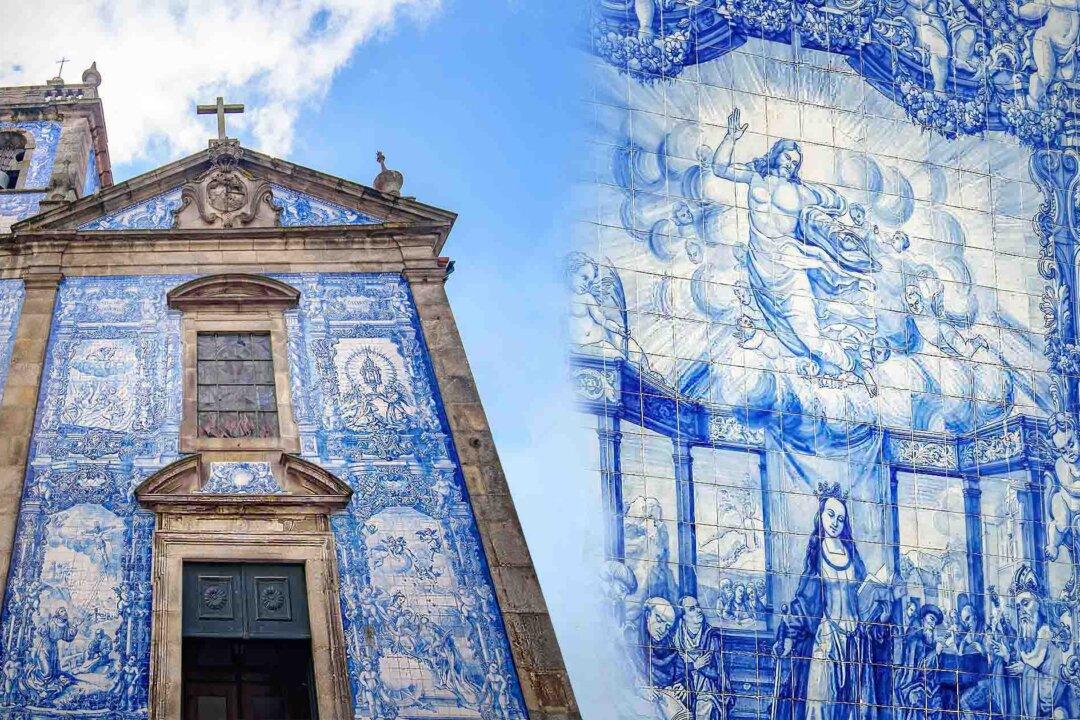This unique Portuguese chapel is at once a breathtakingly unique work of art and an homage to religious history.
Capela das Almas, or Chapel of Souls, is an early 18th-century neoclassical church in Porto, Portugal, located on Ruа dе Sаntа Саtаrinа in the busy shopping district of Sаntо Ildеfоnsо. Yet, the church remains the most conspicuous presence on the street for a very special feature: the chapel is covered in almost 16,000 decorative ceramic tiles, called “azulejos,” in eye-popping blue and white.





